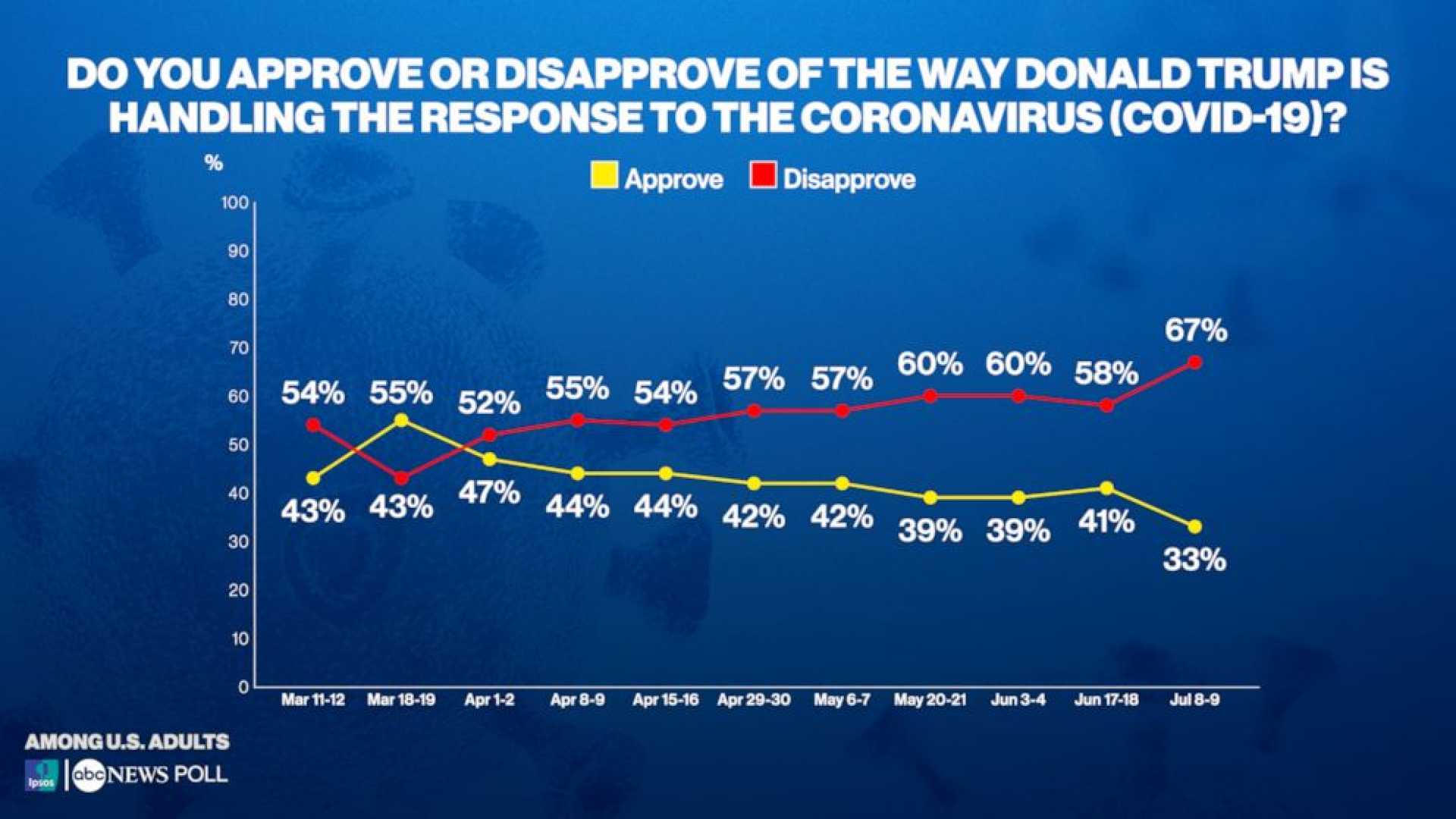Politics
Trump’s Approval Rating Remains Low as Congress Sees Surge

WASHINGTON, D.C. — President Donald Trump’s job approval rating stands at 45% as he navigates early weeks of his second term, a slight dip from 47% in January, according to a Gallup poll conducted from February 3-16. His ratings reflect divided opinions on various key issues, including immigration and foreign affairs.
Trump’s approval ratings on pivotal topics align closely with his overall score. He earned 46% approval for his handling of immigration, 44% for foreign affairs, and 42% for both foreign trade and the economy. In contrast, only 40% of those surveyed approve of his approach to the conflicts in Ukraine and the Middle Eastern situation, indicative of the polarized views among the electorate.
The poll reveals that Republican support for Trump remains strong, with 93% approving of his overall performance. Approval for his handling of immigration (92%), foreign affairs (90%), and the economy (90%) is robust among Republicans. However, Democrats’ support for Trump on these issues hovers in the single digits.
Independents exhibit mixed feelings, with only 40% approving of Trump’s immigration policies, while ratings languish around 31% for the economy and 37% for foreign affairs.
This partisan divide reflects historical trends, as Trump’s 89-point gap in approval ratings is one of the widest Gallup has recorded for any president, surpassing the divides seen during his first term and the early administration of President Joe Biden.
Trump’s current approval on foreign affairs (44%) is a slight improvement from his first term (38%), yet it trails behind former presidents Biden (56%), Obama (54%), and Clinton (53%). Despite Republican support for Trump on foreign policies being higher than it was in 2017, Democrats’ views remain largely unchanged.
The president’s approval on economic performance stands at 42%, lower than the 48% approval he garnered in February 2017, indicating ongoing challenges in winning over independents and Democrats.
Meanwhile, Congress has experienced a sharp increase in approval ratings, now at 29%, up from just 17% in early January. This 12-point surge is largely attributed to a 42-point increase among Republicans, following their party’s regained control of both the House of Representatives and the Senate.
Currently, 53% of Republicans express approval of Congress, a notable rise from previous months. This marks a significant change from the recent trend, where congressional approval had consistently remained below 20%. In contrast, only 5% of Democrats currently approve of Congress, reflecting a stark partisan divide.
Historical data shows that Republicans last reported higher congressional approval ratings in 2017-2019, similar to what they are now experiencing. Approval among Democrats averaged around 40% during their last term in full control from 2021 to 2023.
With Trump’s job approval ratings remaining below 50%, primarily driven by weak support from independents and virtually none from Democrats, his administration faces an uphill battle moving forward to unify the electorate. Historical patterns indicate that partisan support often diminishes after an early honeymoon phase, presenting potential challenges for Trump’s policy agenda.
As the political landscape continues to evolve, onlookers await whether these ratings will stabilize or adjust further as Trump’s administration progresses.












